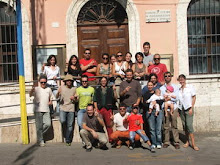Linux is a free and open-source software operating systems built around the Linux kernel. It typically packaged in a form known as a Linux distribution for both desktop and server use. It is a great development environment for programmers and developers. However, without the development tools, that would be impossible. Fortunately, plenty of Linux tools are available. Here are the top 5 most useful Linux tools for programmers.
Also Read;- How To Clone One Android To Another
5 Most Useful Linux tools for Programmers
1. VIM

VIM is a free and open source software written by Bram Moolenaar in 1991. It is designed for use both from a command-line interface and as a standalone application in a graphical user interface. It comes standard with almost every Linux distribution and is also known as "the programmer's editor". VIM is great for coding and can also be used for editing things like configuration files and XML documents.
Vim has been developed to be a cross-platform that supports many other platforms. In 2006, it was voted as the most popular editor amongst Linux Journal readers. In 2015, Stack Overflow developer survey found it to be the third most popular text editor while in 2016, the Stack Overflow developer survey found it to be the fourth most popular development environment.
Read more;- How To Use WhatsApp without Mobile No2. Zsh
Zsh is written in C and initially released in 1990. It is a Unix shell that can be used as an interactive login shell and as a powerful command interpreter for shell scripting. Zsh is an extended version of Bourne shell (BASH) with a large number of improvements, including some features of Bash, ksh, and tcsh. Zsh gives a user-friendly experience on the command line. It also gives better auto-completion, Vim key bindings, and smart guesses when you write a command wrong.
Its features include (but not limited to):
- Programmable command-line completion,
- Sharing of command history among all running shells
- Extended file globbing
- Improved variable/array handling
- Editing of multi-line commands in a single buffer
- Spelling correction
- Various compatibility modes,
- Themeable prompts, and
- Loadable modules.
3. Byobu
It was initially released in 2009 written in Sh and Python. Byobu can be used to provide on-screen notification or status and tabbed multi-window management. Thus, it is intended to improve terminal sessions when users connect to remote servers with an operating system Linux and Unix-like. It is is an enhancement for the GNU Screen terminal multiplexer or tmux used with the GNU/Linux computer operating system.
4. GIT
 Git was initially released on April 7, 2005. It is a version control system to track changes in computer files and to coordinate work on those files among multiple people. It is primarily used for source code management in software development and can be used to keep track of changes in any set of files available in the English language. It is aimed at speed, data integrity, and support for distributed, non-linear workflows. It is free and open source software distributed under the terms of the GNU General Public License version 2.
Git was initially released on April 7, 2005. It is a version control system to track changes in computer files and to coordinate work on those files among multiple people. It is primarily used for source code management in software development and can be used to keep track of changes in any set of files available in the English language. It is aimed at speed, data integrity, and support for distributed, non-linear workflows. It is free and open source software distributed under the terms of the GNU General Public License version 2.Moreover, Linus Torvalds was the creator of GIT for the development of the Linux kernel. On the other hand, its current maintainer since then is Junio Hamano. Thus, every Git directory on every computer is a full-fledged repository with complete history and full version tracking abilities, independent of network access or a central server.
Read more;- How To change Facebook Default Theme
5. Docker
Written by Solomon Hykes in 2013, it is a computer program that performs operating-system-level virtualization, the containerization, which is developed by Docker, Inc. Primarily, Docker was developed for Linux to use as the resource isolation features of the Linux kernel. It is a tool that can package an application and its dependencies in a virtual container that can run on any Linux server. This helps enable the flexibility and portability on where the application can run, whether on premises, public cloud, private cloud, bare metal, etc. Moreover, it accesses the Linux kernel's virtualization features either directly using the libcontainer library.
Related posts
- How To Hack
- Hacker Tool Kit
- Tools 4 Hack
- Pentest Tools Download
- Physical Pentest Tools
- Hack Tool Apk No Root
- Hack Tool Apk
- Hacking Tools Windows 10
- Hacking Tools For Mac
- Hacker Techniques Tools And Incident Handling
- Hack Rom Tools
- Kik Hack Tools
- Pentest Tools Subdomain
- Hacker
- Hacking Tools Windows 10
- Hacking Tools For Beginners
- Android Hack Tools Github
- Hacker Tools List
- Hack Tools Pc
- Tools For Hacker
- Hackers Toolbox
- Hacker Tools Mac
- Best Hacking Tools 2019
- Pentest Tools Nmap
- Hacking Tools Download
- Pentest Tools Review
- Hacks And Tools
- Hacker Search Tools
- Pentest Tools Nmap
- Hacker
- Hack Tools For Pc
- What Is Hacking Tools
- Pentest Tools Subdomain
- Pentest Tools Linux
- Tools Used For Hacking
- Hack And Tools
- Hack Rom Tools
- Tools For Hacker
- Termux Hacking Tools 2019
- How To Hack
- Beginner Hacker Tools
- Pentest Tools Apk
- Kik Hack Tools
- Free Pentest Tools For Windows
- How To Install Pentest Tools In Ubuntu
- Free Pentest Tools For Windows
- Hacking Tools For Windows 7
- Hacker Tools 2020
- Pentest Tools Online
- Pentest Tools Website
- Underground Hacker Sites
- New Hacker Tools
- Pentest Recon Tools
- Pentest Tools Linux
- Pentest Tools List
- Install Pentest Tools Ubuntu
- Black Hat Hacker Tools
- Hack Tools For Games
- Hack Tools Online
- Hacking Tools For Windows 7
- Pentest Reporting Tools
- Hacker Tools
- Hacking Tools For Windows Free Download
- Growth Hacker Tools
- Hack Website Online Tool
- Pentest Automation Tools
- Kik Hack Tools
- Pentest Tools For Windows
- Hacking Tools Usb











Nessun commento:
Posta un commento